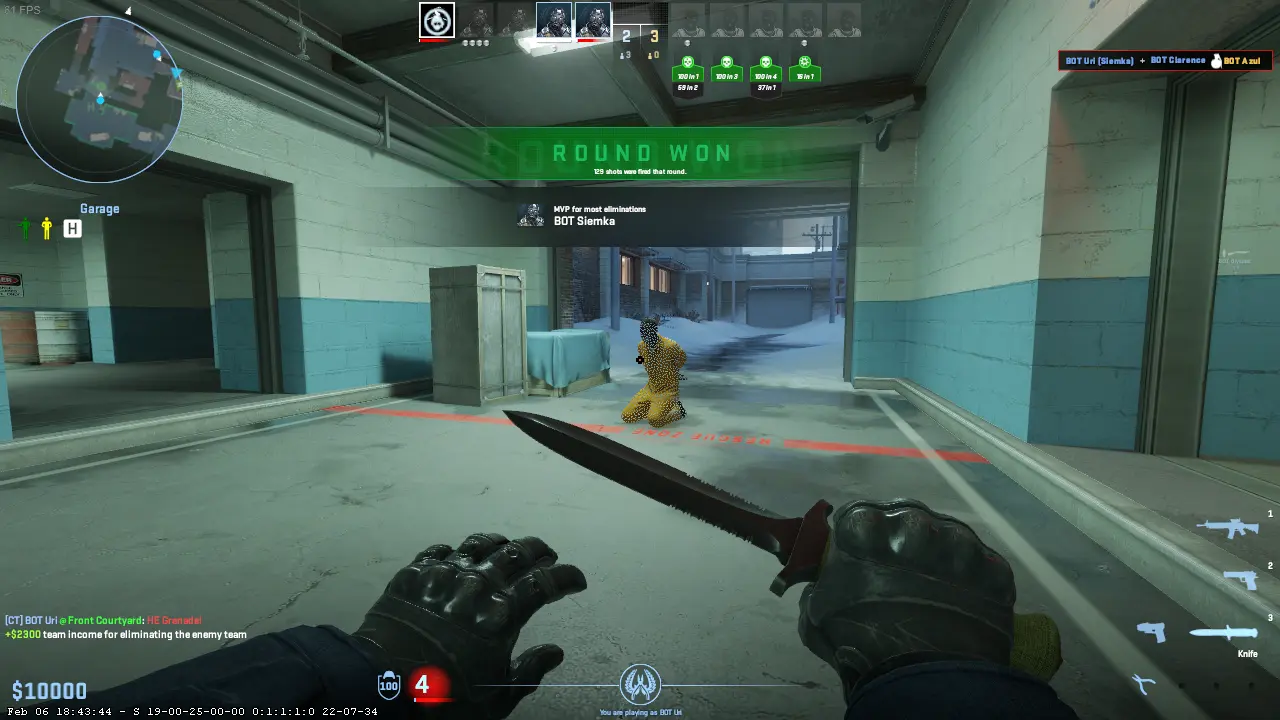Print Fix Hub
Your go-to source for everything print-related, from troubleshooting to tips.
Hostage Situations: Navigating CS2 Maps with Finesse
Master CS2 maps and outsmart hostage situations with our expert tips! Elevate your gameplay and ensure every rescue mission is a success!
Mastering Map Layouts: Top Strategies for CS2 Hostage Situations
In Counter-Strike 2 (CS2), mastering map layouts is crucial for securing victory in hostage situations. Effective communication and coordination among teammates can significantly enhance your chances of success. One of the top strategies is to familiarize yourself with key map areas such as choke points, potential ambush spots, and escape routes. Understanding these locations allows players to develop a tactical approach when navigating through the environments. Utilize your map knowledge to predict enemy movements and secure advantageous positions, thereby increasing your team's chance of rescuing hostages safely.
Another essential strategy is to create a team formation that leverages the strengths of your players while considering the map layout. For instance, deploying a player with strong communication skills to scout ahead can help gather vital information while keeping the team together. Additionally, planning defensive positions can thwart enemy attempts to sabotage your hostage extraction. Remember to coordinate the use of utilities like smoke grenades and flashbangs to obscure enemy vision, providing a safer passage for your teammates. By incorporating these tactical approaches, you can significantly improve your performance in CS2 hostage scenarios.

Counter-Strike is a popular team-based first-person shooter that has captivated gaming audiences since its inception. Players can choose to be part of terrorist or counter-terrorist teams, working together to achieve specific objectives. A popular feature among players is the cs20 case, which contains various weapons and skins that enhance gameplay and personal expression.
Essential Communication Tips for Coordinating in Hostage Scenarios
In hostage scenarios, effective communication is paramount for ensuring the safety of both hostages and negotiators. It is essential to establish rapport with the hostage-taker early in the process. This can be achieved through active listening and non-confrontational dialogue. By using a calm and composed tone, negotiators can help to diffuse tension and build trust, which can lead to more productive conversations. Additionally, utilizing open-ended questions allows negotiators to gather valuable information while keeping the hostage-taker engaged in the process.
Another critical aspect of communication in hostage situations is the use of body language. Non-verbal cues often speak louder than words, making it crucial for negotiators to maintain a relaxed demeanor. This includes steady eye contact, appropriate facial expressions, and open body posture, which can convey empathy and understanding. Furthermore, it is important for teams to have clear communication protocols in place. Implementing a structured system of signals or codes can facilitate seamless coordination among team members, ensuring that everyone is informed and can respond appropriately to the evolving scenario.
How to Utilize Cover Effectively in CS2's Hostage Maps
In CS2's hostage maps, understanding how to utilize cover effectively is crucial for both survival and successful mission completion. The layout of these maps often provides ample opportunities for players to leverage various forms of cover, such as walls, crates, and other environmental features. To maximize your defensive strategy, identify key locations that allow you to peek and engage enemies without exposing yourself too much. Additionally, practice using smokes and other utilities to obscure enemy vision, providing you with the chance to reposition or execute tactical maneuvers.
When navigating through hostage maps, always remain aware of your surroundings and make constant use of available cover. Consider implementing a few basic strategies using an ordered list outline:
- Position Wisely: Always be aware of your positioning relative to the hostages; maintain a vantage point that allows you to protect them while utilizing cover.
- Reverse Angles: Use cover to create reverse angles, making it harder for enemies to anticipate your movements.
- Communicate: Coordinate with teammates to set up crossfire positions behind cover, allowing for greater firepower against attackers.
By effectively utilizing cover, you can turn the tide of battle in hostage rescue missions, ensuring both your survival and the safety of the hostages.